When it comes to kitchen renovations, quartz countertops are often at the top of my list for consideration. Their combination of beauty, durability, and low maintenance makes them an ideal choice for most modern kitchens. Quartz offers a sleek, polished look that can easily elevate the design of any space, while also being practical enough for daily use. I’ve found that homeowners love quartz because it provides that high-end feel without the high-maintenance needs of natural stone. With a huge variety of colors, patterns, and finishes to choose from, quartz countertops open up endless design possibilities.
One of the things I like most about quartz is the range of aesthetic options it provides. Quartz countertops are engineered, meaning they are made from a blend of natural quartz and resin, which allows manufacturers to control the appearance. Whether you want a classic white countertop with subtle veining, a bold black surface, or something in between, quartz can deliver. The engineered aspect also means you can get countertops that mimic the look of natural stone like marble or granite, but without the drawbacks those materials bring, such as susceptibility to staining or chipping.
A popular design idea that I always suggest is opting for a neutral-colored quartz countertop as a foundation for a timeless kitchen design. White, beige, and gray quartz countertops are versatile choices that can complement a wide range of cabinetry and backsplash designs. A soft white quartz with faint gray veins, for instance, can evoke the look of marble, but with far more durability. Neutral tones are also less likely to go out of style, which means your kitchen can look modern for years without the need for frequent updates.
For those who want to make a bolder design statement, darker quartz countertops can be the way to go. Black or charcoal-colored quartz countertops, for example, can give a kitchen a dramatic and sophisticated feel. I’ve seen this paired effectively with white cabinets or open shelving to create a striking contrast. The smooth, polished finish of dark quartz adds an air of luxury, while the non-porous surface makes it resistant to stains and easy to clean – a practical advantage for anyone who loves to cook.
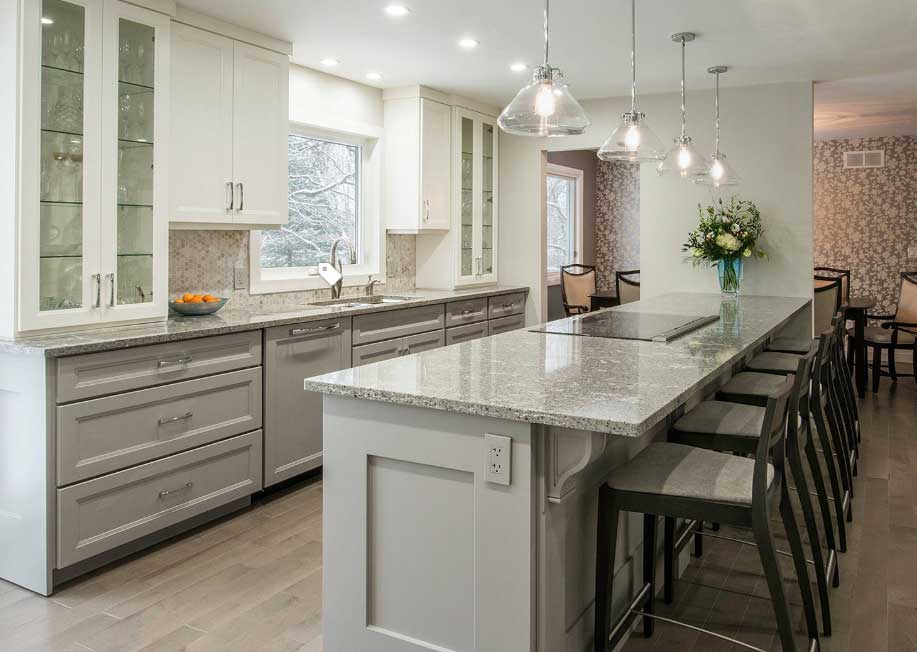
Another great idea is to use quartz countertops as part of a two-tone kitchen design. This approach involves using different colors or finishes for the upper and lower cabinets and coordinating the countertops to pull the design together. For example, pairing light quartz countertops with dark lower cabinets and lighter upper cabinets can create a balanced and dynamic visual effect. In some cases, I recommend using one color for the perimeter countertops and another for the kitchen island to make it stand out as a focal point. Quartz is perfect for this because it comes in such a wide range of colors and patterns, making it easy to find complementary options.
Quartz also works wonderfully in kitchens that embrace a more industrial or minimalist design style. A honed or matte finish quartz countertop, rather than the typical glossy finish, can give the kitchen a sleek and understated look. These finishes tend to have a softer, more subtle texture, which can create a warm and inviting atmosphere. I’ve found that pairing a matte-finish quartz countertop with stainless steel appliances or industrial-style light fixtures creates a chic, contemporary vibe that’s both functional and stylish.
Of course, the durability of quartz is one of its main selling points. Unlike natural stones like granite or marble, quartz is non-porous, which means it doesn’t require sealing. This makes it resistant to stains, scratches, and bacteria. In a busy kitchen, where spills and messes are inevitable, this feature can be a real lifesaver. I love recommending quartz to clients who want a countertop that can withstand daily wear and tear without the constant worry of damage.
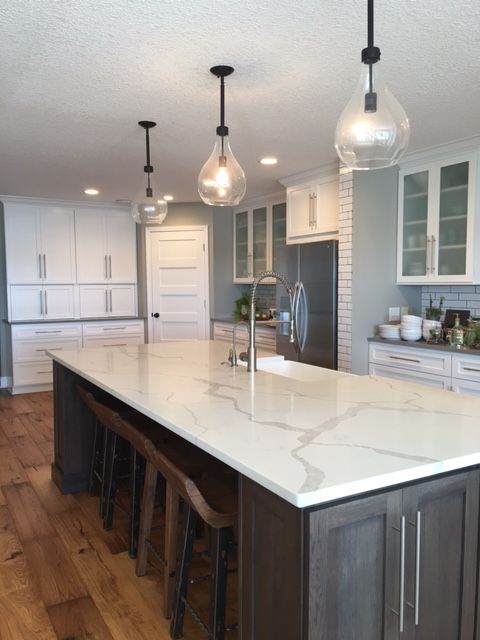
Maintenance is another big plus. Quartz countertops are incredibly easy to care for, requiring only a simple wipe-down with soap and water to keep them looking new. This low-maintenance aspect is a huge advantage, especially for families with young children or anyone who doesn’t have time to devote to regular countertop upkeep. Unlike natural stones, which can be sensitive to acidic substances like lemon juice or vinegar, quartz holds up well against most common household items.
In terms of design flexibility, quartz countertops can be used in various applications beyond just kitchen counters. For example, I’ve seen them used for waterfall edges, where the countertop material extends down the sides of an island or peninsula. This creates a seamless, flowing look that’s perfect for modern, open-concept kitchens. The continuous surface adds a touch of luxury and can make a bold statement in any space.
Another idea I love is using quartz countertops for backsplashes as well. Instead of choosing a separate tile or material for the backsplash, extending the quartz from the countertop up the wall creates a cohesive, unified look. It’s also a practical choice, as the non-porous nature of quartz makes it easy to clean, just like the countertop surface. This works particularly well in kitchens with open shelving or large windows, where a tiled backsplash might feel too busy.
For those who like a little extra flair, there are also quartz countertops available with glittering or metallic flecks embedded in the surface. These countertops add a bit of sparkle to the kitchen, catching the light and creating a sense of movement and depth. I’ve seen these used in kitchens with more traditional designs, as well as in ultra-modern spaces, and they can add a unique touch without overpowering the rest of the design.
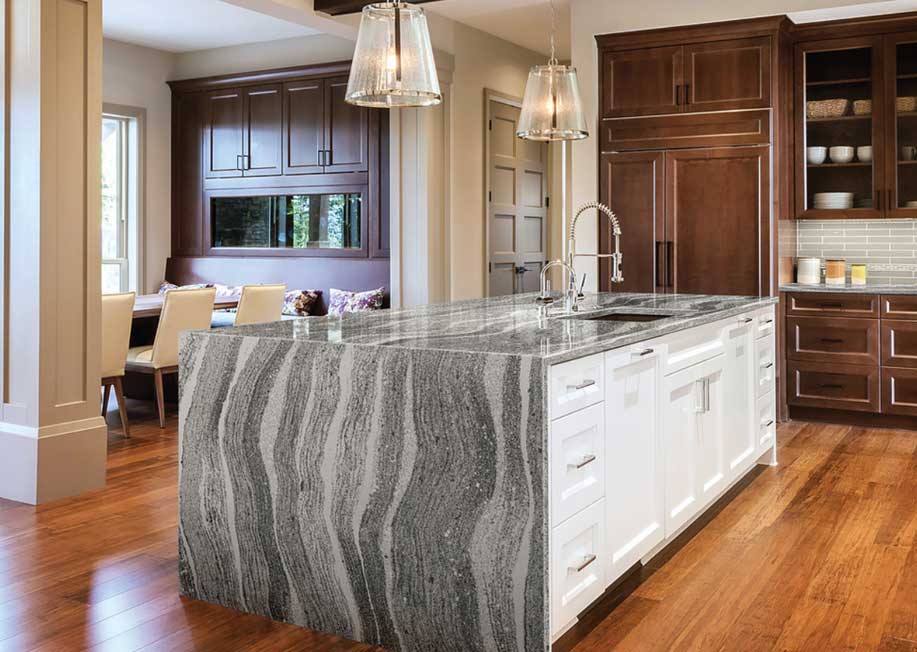
While most people opt for the standard polished quartz finish, I also suggest exploring other texture options. Leathered or textured quartz countertops offer a more tactile surface that adds interest without sacrificing durability. These textures can create a rustic or natural look that works beautifully in farmhouse-style kitchens or spaces that lean into organic materials and finishes. It’s a subtle way to add character to the kitchen while still enjoying the benefits of quartz.
The variety of edge profiles available for quartz countertops is another important design aspect to consider. A simple square edge gives a sleek, modern look, while more ornate edges like beveled or bullnose profiles can add a touch of elegance to more traditional kitchens. Choosing the right edge profile can really elevate the overall appearance of your kitchen and help tie together the design elements.
I also love how quartz countertops pair with natural materials like wood. In kitchens that feature butcher block islands or wood accents, a quartz countertop can provide a beautiful contrast while still feeling cohesive. The cool, polished surface of quartz complements the warmth and texture of wood, creating a balanced and inviting space. This mix of materials is perfect for homeowners looking to blend modern and rustic design elements.
Finally, one of the best aspects of quartz countertops is their long-term value. While they may cost more upfront than laminate or other synthetic options, their durability and timeless appeal make them a great investment. In my experience, quartz countertops add value to a home, both in terms of aesthetic appeal and resale value. Homebuyers are often drawn to kitchens with high-quality countertops, and quartz provides that premium look without the extensive upkeep that natural stone requires.

Common Mistakes to Avoid
One of the most common mistakes I’ve seen when choosing quartz countertops is not considering the overall kitchen design. It’s easy to fall in love with a specific pattern or color of quartz, but it’s crucial to make sure it complements the cabinets, flooring, and other design elements. Taking samples home to see how they look in the actual kitchen space is always a good idea before making a final decision.
Another mistake is not budgeting for the additional costs that can come with quartz countertops. While the material itself is often reasonably priced, custom edges, cutouts for sinks, and installation fees can add up quickly. It’s important to plan for these extra expenses when setting your budget to avoid surprises later on.
Rushing the installation process can also lead to problems down the line. Quartz is heavy and requires precise handling, so hiring experienced professionals for installation is key. DIY installation might seem like a way to save money, but improper handling can lead to cracks or uneven surfaces that are costly to fix.
Another common issue is not accounting for the seams in quartz countertops. While quartz slabs are large, they might not be big enough to cover an entire kitchen without seams. Proper planning for seam placement is essential to ensure they are as unobtrusive as possible. A professional installer can help make sure seams are placed in less noticeable areas.
Lastly, not considering the finish of the quartz is another mistake. While polished quartz is the most popular, other finishes like honed or leathered quartz can offer a different look and feel. It’s important to think about how the finish will work with the rest of your kitchen design and daily use.

How durable are quartz countertops?
Quartz countertops are incredibly durable and resistant to stains, scratches, and heat. Because they are engineered, they are non-porous, meaning they won’t absorb liquids or harbor bacteria, making them ideal for kitchens. However, it’s still a good idea to use trivets for hot pans and cutting boards to prevent damage from direct heat or sharp objects.
How do I clean quartz countertops?
Cleaning quartz countertops is very simple. A mild dish soap and water solution is usually enough to keep them clean. For tougher stains, a non-abrasive cleaner can be used, but avoid harsh chemicals like bleach or ammonia, which can break down the resin in the quartz over time. Wiping up spills as they happen will also help maintain the surface.
Can quartz countertops be repaired if damaged?
While quartz countertops are highly durable, damage can still occur in extreme situations, such as heavy impacts or exposure to excessive heat. Minor chips or cracks can often be repaired with specialized resin fillers, but major damage might require professional repair or replacement of the affected section.
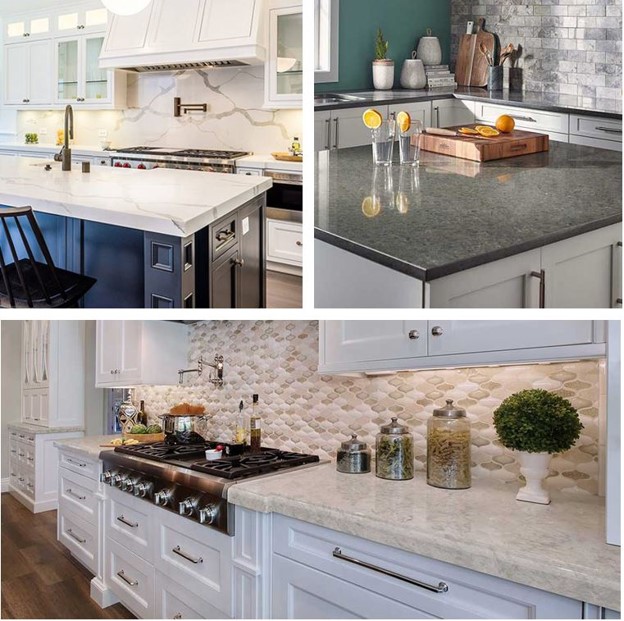
What’s the difference between quartz and granite countertops?
Quartz countertops are engineered from a blend of natural quartz and resin, while granite is a natural stone. Quartz is non-porous, meaning it doesn’t need to be sealed, and it’s more resistant to stains. Granite, on the other hand, has a more natural, unique look since each slab is different, but it requires regular sealing and maintenance.
Are quartz countertops heat-resistant?
While quartz countertops are heat-resistant to an extent, it’s still recommended to use trivets or hot pads under pots and pans. Direct exposure to high heat can cause discoloration or cracks in the resin that holds the quartz together, so it’s best to err on the side of caution.
Can I use quartz for both countertops and backsplashes?
Yes, quartz can be used for both countertops and backsplashes. In fact, using quartz for both creates a seamless, cohesive look in the kitchen. Quartz backsplashes are also very easy to clean and maintain, just like the countertops, making them a practical and stylish choice.

Best Quartz Countertop Ideas: Quartz Countertops
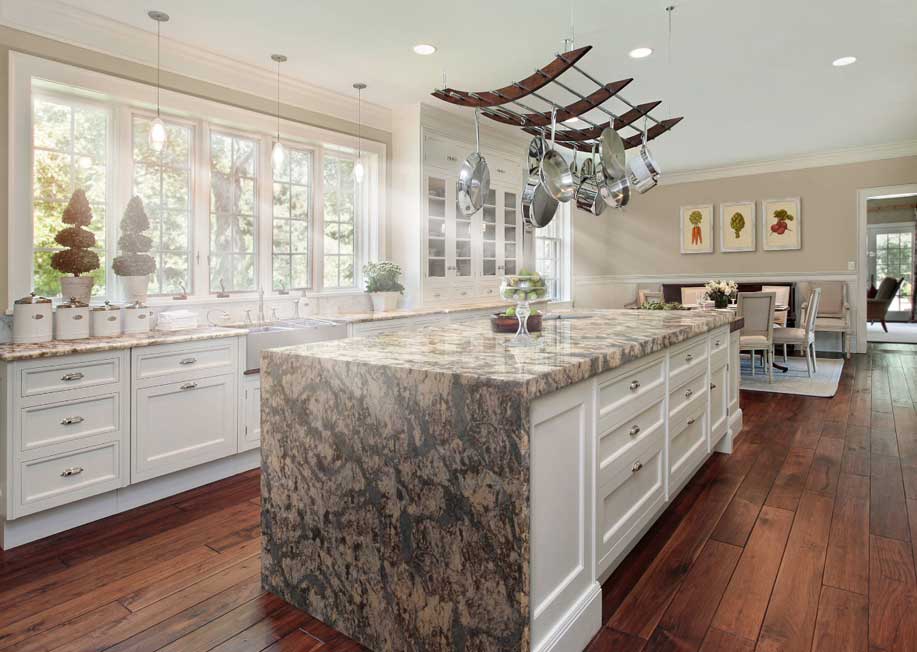
Quartz Kitchen Countertops for an Elegant Kitchen
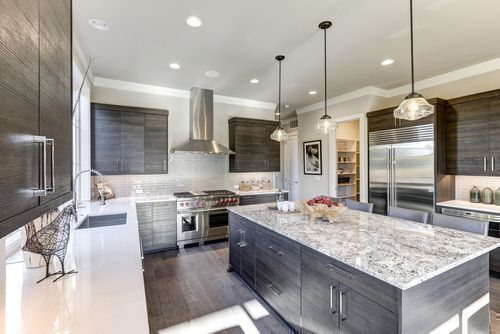
Related articles: